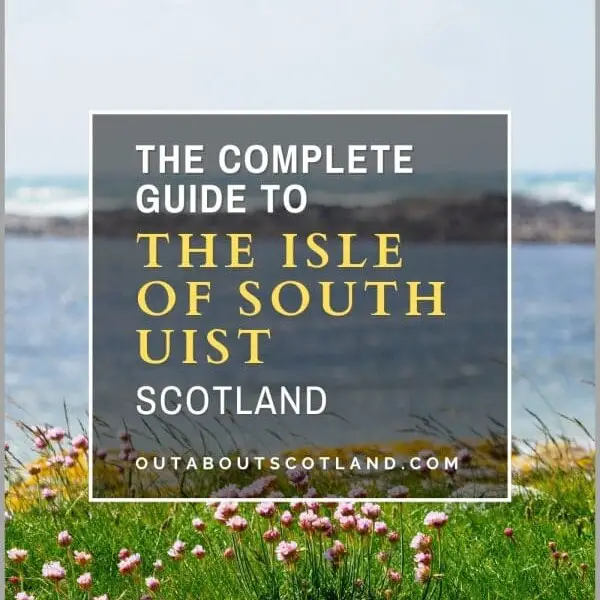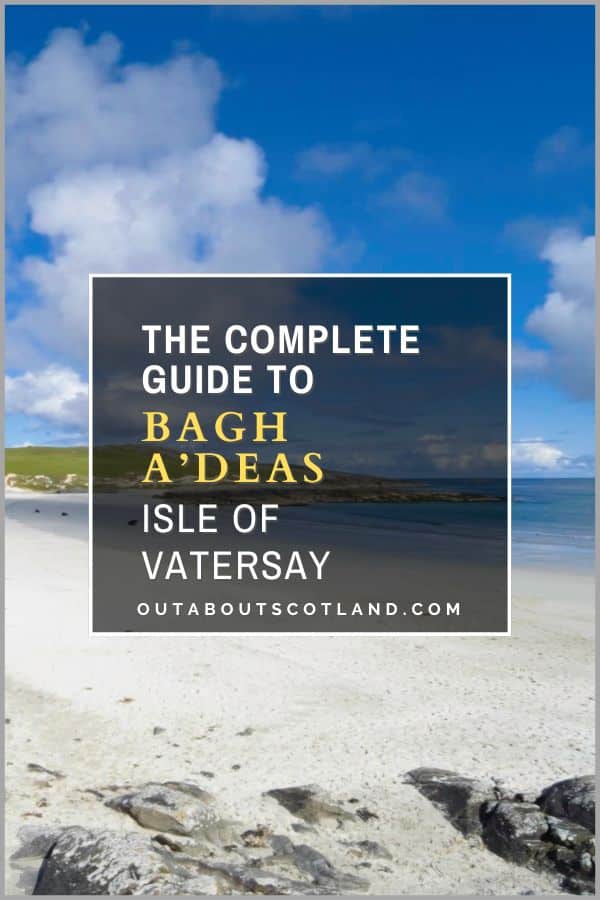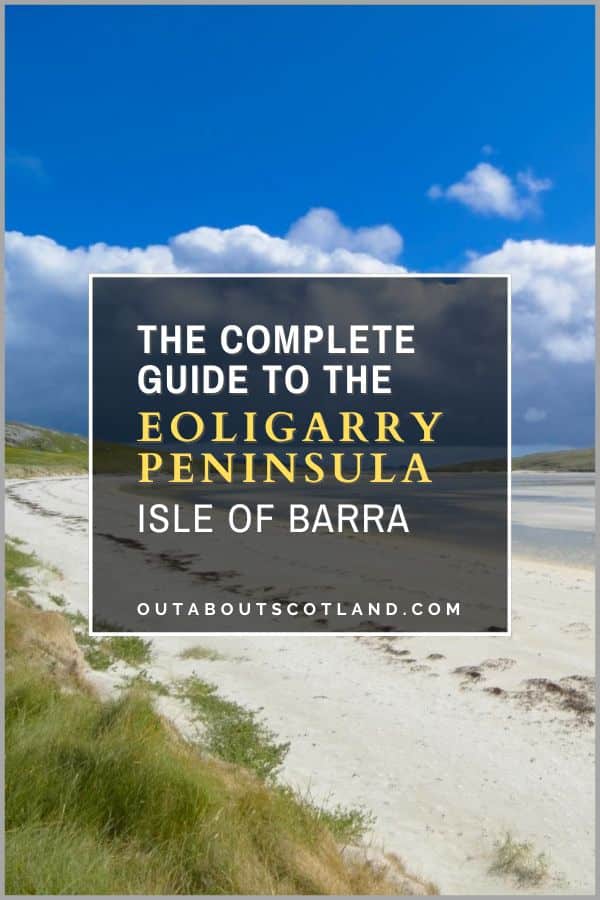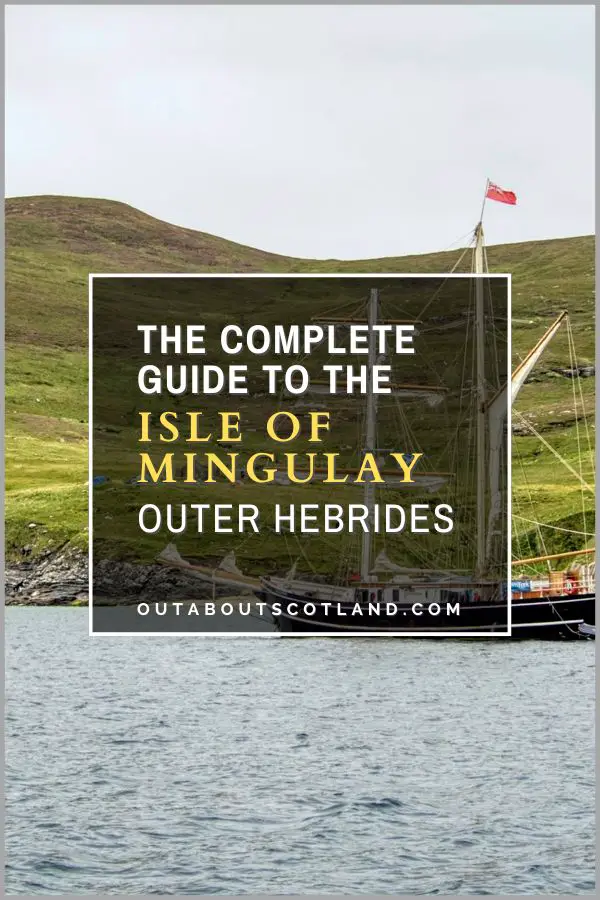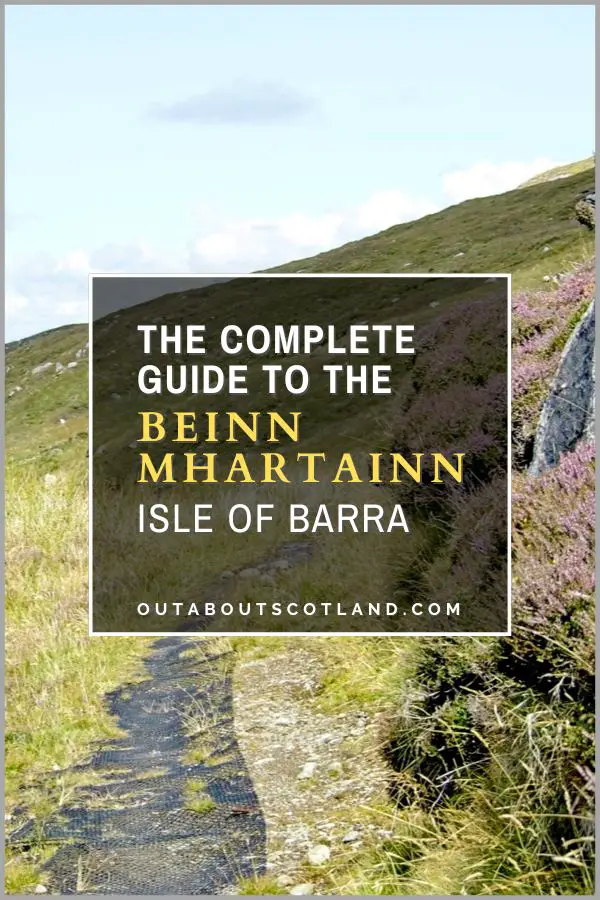At 124 square miles, South Uist (pronounced yoo-ist) is the second-largest island in the Outer Hebrides, yet it’s home to less than 2,000 people. Visitors to the island will quickly find themselves lost in a hauntingly beautiful landscape where nature thrives across mile after mile of white powder beaches to the west and heather-covered hills to the east.
The island is also home to many of Scotland’s most iconic animals, such as the elusive corncrake and sea eagle, as well as red deer, which roam the island’s windswept uplands. Discover more information about this remarkable island in this ultimate South Uist visitor guide
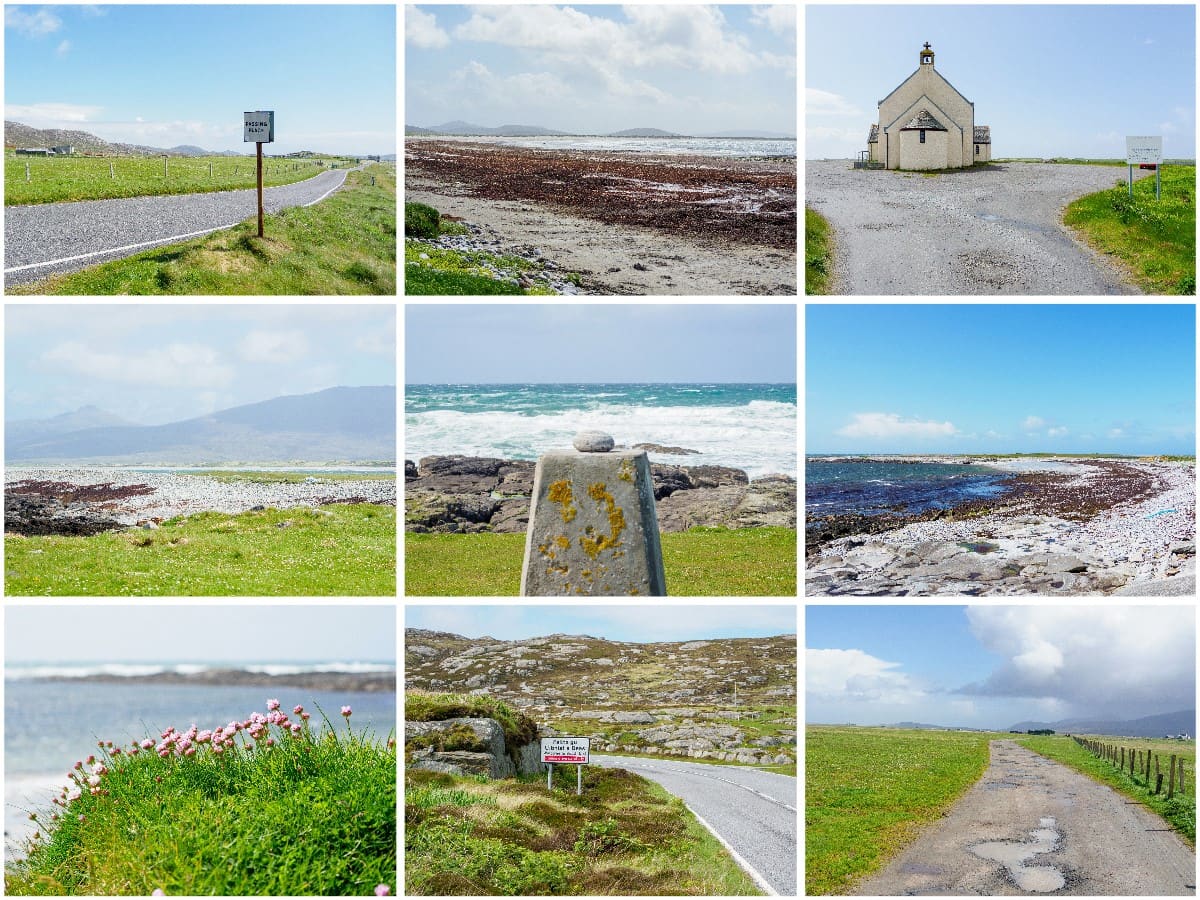
| Address: | Ferry Terminal, Lochboisdale, HS8 5TH |
| Opening Hours: | The Isle of South Uist is open 24/7, 365 days a year. Ferry times at the Lochboisdale terminal are operator-dependent. |
| Admission Price: | N/A |
| Parking: | The majority of parking spaces on the island are roadside verges. Roadside parking on the main A865 road is not advised. There are multiple places for overnight campervan parking near the beaches on the east side of the island. A recommended campsite is located at Kilbride near the Eriskay causeway. |
| Contact: | N/A |
| Facilities: | Lochboisdale (south): Ferry terminal, fuel forecourt, tourist information, bank. Carnan (north): Supermarket. Kildonan (middle): Cafe in the museum. Creagorry, Benbecula: Supermarket. |
| Photos: | Virtual Tour |
Overview
The Outer Hebrides comprise more than 70 islands which form a 130-mile chain off the west coast of Scotland. Only 15 of these islands are inhabited with the largest (Harris and Lewis) situated to the north of the archipelago followed by the Uists to the south. The Uists are split into the islands of North and South Uist, which are separated in the middle by Benbecula, with two smaller islands positioned to the immediate north (Berneray) and south (Ersikay).
All of the Uist islands are joined by roads and causeways meaning a holiday on one can easily include trips to the others, and thanks to a network of ferries, tourists can also easily include visits to the islands of Barra and Harris.
It’s fair to say the Uist islands make a great base to explore the Outer Hebrides, but in my opinion, South Uist is the pick of the bunch. There are two reasons for that. The first is that the South Uist beaches run almost uninterrupted along the island’s entire western coastline.
Starting from the Eriskay causeway and finishing at the Benbecula causeway, the beaches on South Uist are wide, impeccably clean, and have the most powder-white sand you’re ever likely to see in Scotland.
The second reason is the east side of the island, which has an incredible mixed landscape of sweeping heather-covered moorland and dramatic rolling hillsinterspersed with hundreds of lochs and lochans, which are bordered by a wild and beautifully unspoilt coastline.
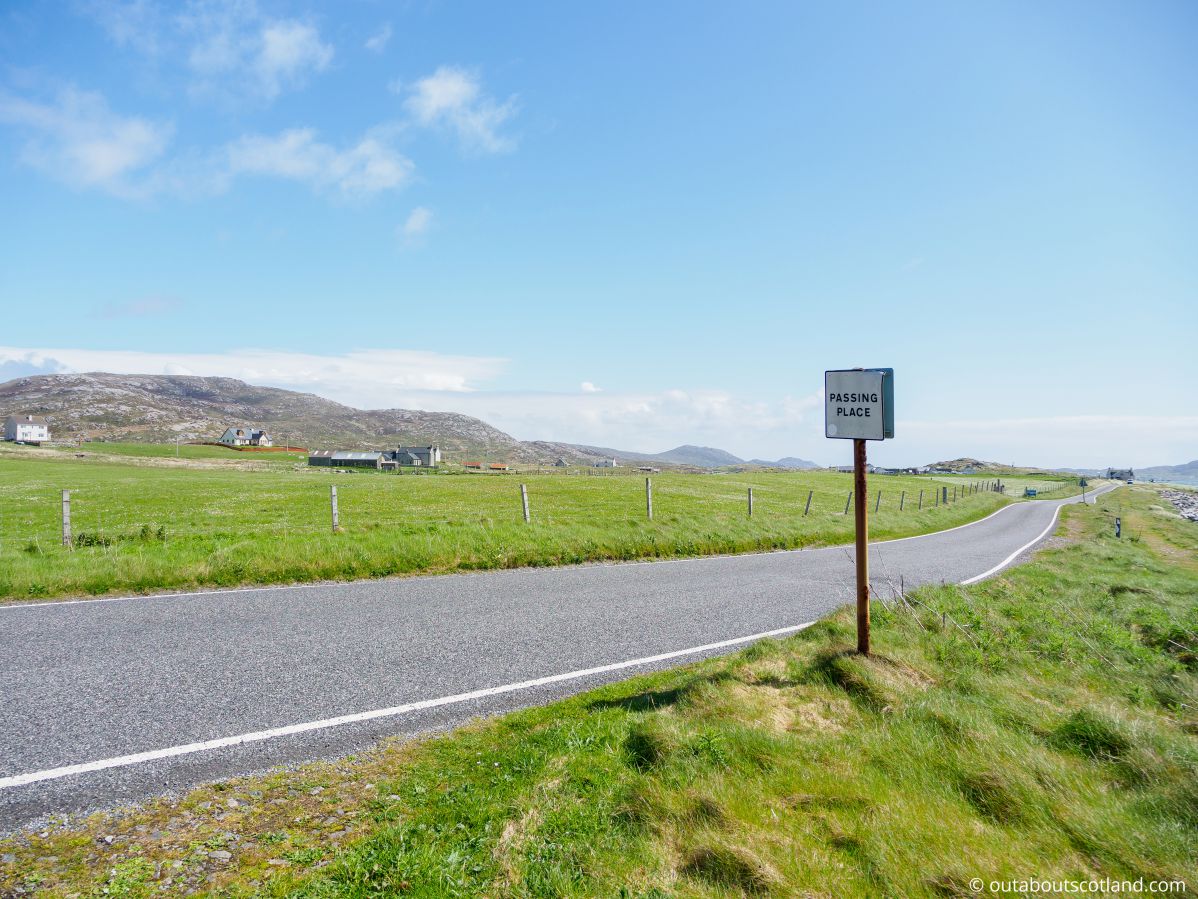
As far as tourist attractions are concerned, well… there aren’t many to speak of to be honest as the majority of activities revolve around enjoying the scenery, but I have to give a mention to the Kildonan Centre which is located pretty much in the centre of the island and features an interesting museum about the island’s heritage.
There’s a good cafe and a wee gift shop in the centre and it’s also situated close to the ruins of Flora Macdonald’s birthplace so anyone with an interest in history will enjoy a visit to this local museum. That being said, as it’s pretty much the only indoor attraction on the island, it’s best left for the inevitable wet and windy afternoons when you can’t face going outside.
The other attraction worth mentioning is Loch Druidibeg National Nature Reserve which is absolutely stunning from late spring to early autumn when the surrounding hills bloom with flowering heather and flocks of migrating birds can be seen circling overhead.
The road leading to Loch Druidibeg from Kinloch cuts across the island to Loch Sgioport on a tarmacked route that’s fairly undulating but is recommended for an enjoyable cycle. This road is also a good starting point for hikes up Beinn Mhor, which is the only Graham (a mountain between 2,000 and 2,500 feet) in the Outer Hebrides.
Hiking Beinn Mhor is tricky due to the barren landscape, and it’s rather easy to find yourself off-course, which is why a map of South Uist is a necessity if you really want to make the most of the island.
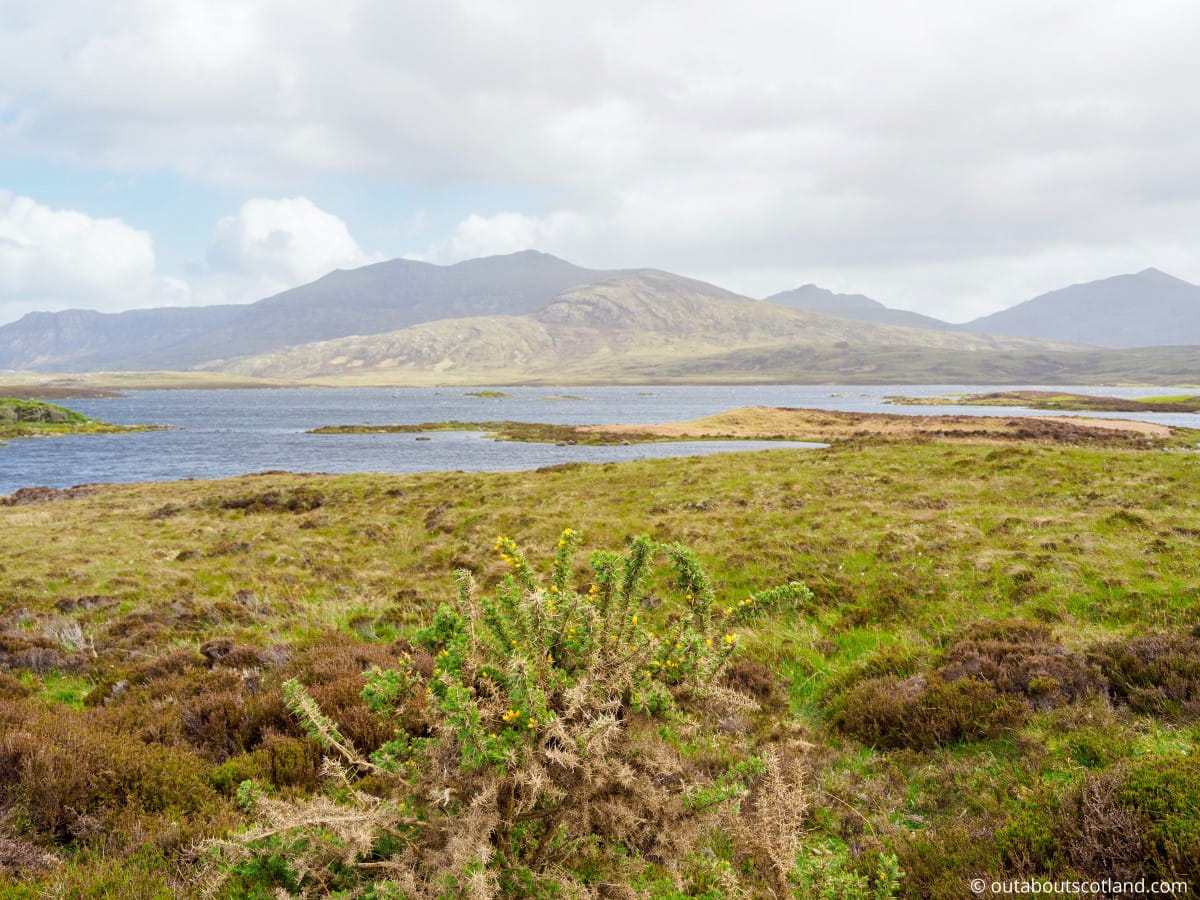
The Highlights
1: South Uist has two distinct regions that are both worth exploring during a tour of the Outer Hebrides. The west side of the island is home to a collection of stunning white sand beaches while the east side is more dramatic with long hill ridges and a rocky shoreline. Visiting this island is a delight for families and solo adventures alike, as there are ample opportunities for lazy beach days as well as long hikes into one of the remotest places in Scotland.
2: The Loch Druidibeg National Nature Reserve is absolutely stunning and is widely regarded as one of the finest nature reserves in Britain. Across 34 square kilometres, you will see birds such as lapwings, corncrakes, white-tailed eagles, and hen harriers in a landscape that includes a freshwater loch and mile upon mile of unspoilt moorland.
3: Thanks to causeways at the northern and southern ends of South Uist it’s easy to drive in either direction to see Benbecula (north) and Eriskay (south). These two islands offer superb walks along coastal roads and they’re more than worthy of a day trip on their own, or perhaps on a tour by bicycle.
Visitors interested in cycling from the bottom of Erisaky, through South Uist, across Benbecula, and up to the top of North Uist will find more information at the official Hebridean Way website.
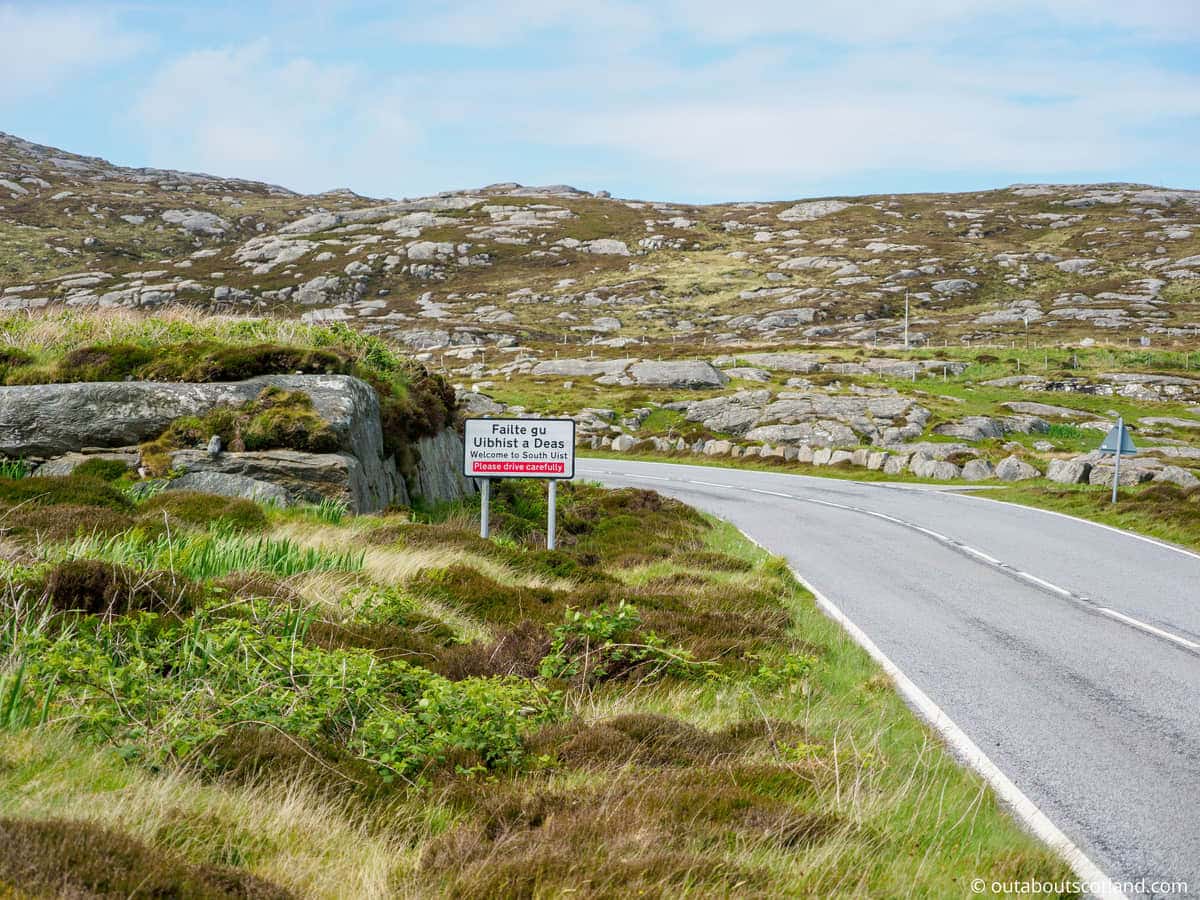
Visiting Tips
1: Facilities in South Uist are few and far between so if you’re staying in self-catering accommodation I highly recommend taking as much food with you as possible. There’s a supermarket in Carnan near the causeway but I personally prefer the Co-op located just across the other side of the bridge on Benbecula.
2: There aren’t many things to do indoors on this island, so you might consider saving a visit to Kildonan Museum for a rainy day. The museum is small but interesting and offers an hour or so of wandering around the exhibits before picking up a souvenir in the gift shop and heading to the cafe for lunch.
If the weather brightens after a tour of the museum, head south on the A865 and then take the first right to see the remains of Flora MacDonald‘s house. You’ll find more things to do in South Uist further down this page.
3: With regard to parking, the best sites are located along the single-track coastal roads and tracks that run alongside the eastern coastline. There are several campsites in South Uist where it’s possible to wild camp or park a campervan near the beaches, but it’s strongly advised not to park on the machair (the wild grasses that grow next to the dunes).
The reason for this is that machair is one of the rarest habitats in Europe and protecting it is vital to the conservation of Scotland’s west coast wildlife such as corncrakes, plus many of the flowers that grow in the machair are endangered, including Hebridean spotted orchids and marsh orchids.
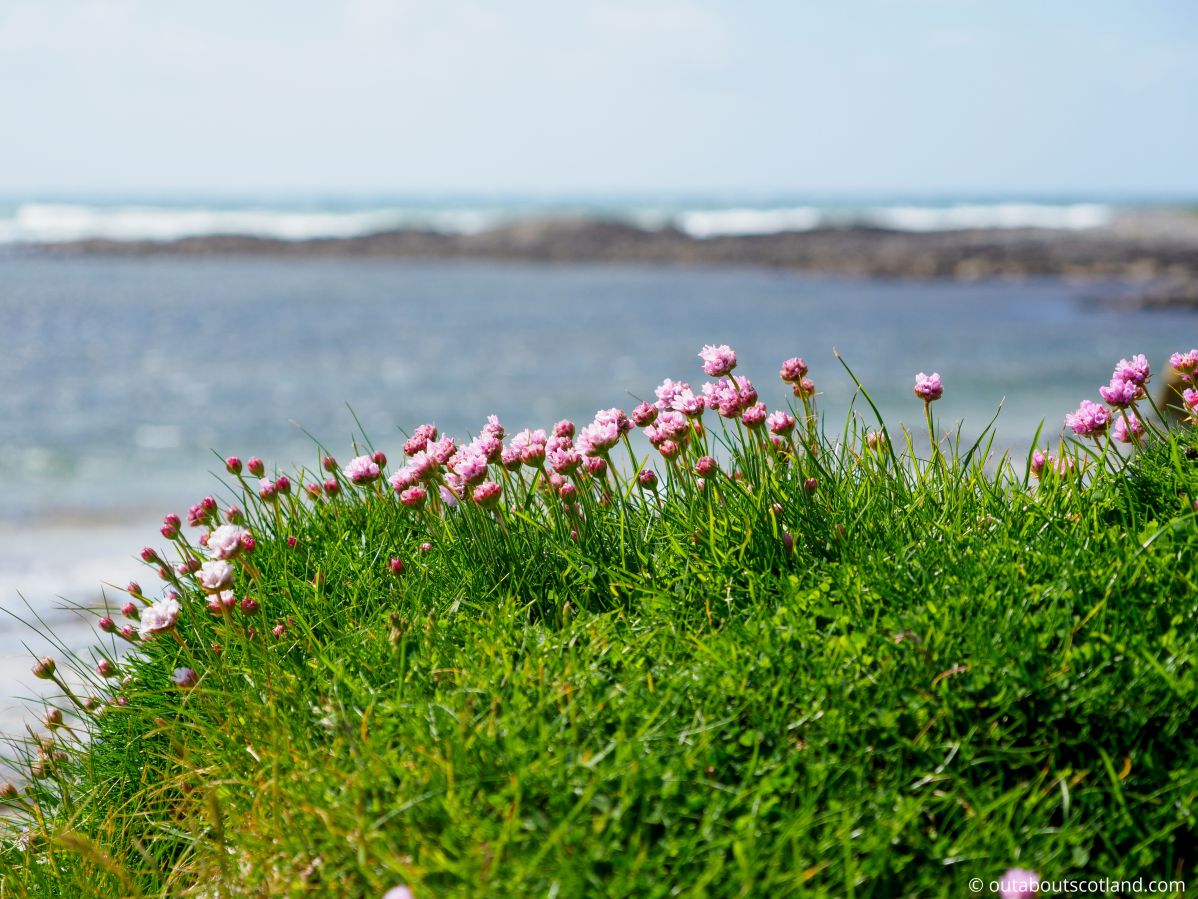
Tourist Information
There are three main options for getting to South Uist depending on how you intend to see the Outer Hebrides. If you’re touring the Hebridean Way then you will either start on the Isle of Lewis and head south, or start on the Isle of Vatersay and head north.
Vatersay tends to be the standard Hebridean Way starting point and there are ferries sailing from Oban on the mainland to Castlebay on Barra which can be combined with another crossing from Ardmhor on Barra to Eriskay which then joins South Uist via a causeway.
If travelling in the opposite direction you will depart from Ullapool on the mainland and sail into Stornoway on Lewis followed by a drive to Leverburgh on North Harris where you can then catch a ferry to Berneray island which has a causeway linking it to North Uist.
The third option is to sail directly into Lochboisdale on the South Uist from Oban, and this is what I personally recommend for visitors that intend to spend the majority of their holiday on the Uists. Lochboisdale is the largest village on South Uist, but ‘large’ has to be taken into context with such a remote island as there are only around 300 residents and just a handful of amenities, including a cafe, a bank, and a post office.
The rest of the island has a smattering of isolated settlements along the flat eastern side and barely any houses at all on the western side due to the mountainous landscape, which basically means South Uist could be the ultimate island getaway for visitors looking to chill out for a few days.

As far as sightseeing goes, bear in mind that due to its large size and small population almost all attractions revolve around the great outdoors, although access to most of the island is very limited, to say the least.
Visitors without a car can make use of the local bus service (number W17 runs north to south through Uist) but the buses are rather infrequent so I wouldn’t plan your holiday around them. The official council website has downloadable timetables which are worth saving to your phone, just in case.
There’s one main road that crosses the island north to south (the A865) along with a few side roads that deviate west to the beaches, but there are very few roads that head into the mountainous eastern half of the island so tourists are few and far between in that region.
A welcome side effect of having few human visitors is that wildlife thrives on South Uist, so if you have a pair of binoculars (link to my recommended optics) I strongly suggest taking them with you.
On South Uist, vast expanses of machair—wildflowers and grasses—back the windswept beaches and are home to many different species, including geese, corncrakes, lapwings, and others. In the sky above, white-tailed eagles and hen harriers are frequently on the lookout for their next meal. Otters are a common sight around the coastline, and red deer roam the wild moorland, both of which are best viewed in the Loch Druidibeg nature reserve.
Perhaps the highlight of seeing South Uist’s wildlife is heading out onto the open water for a guided boat tour to view the famed South Hebridean seals, dolphins, orcas and minke whales that come to the area throughout the year.
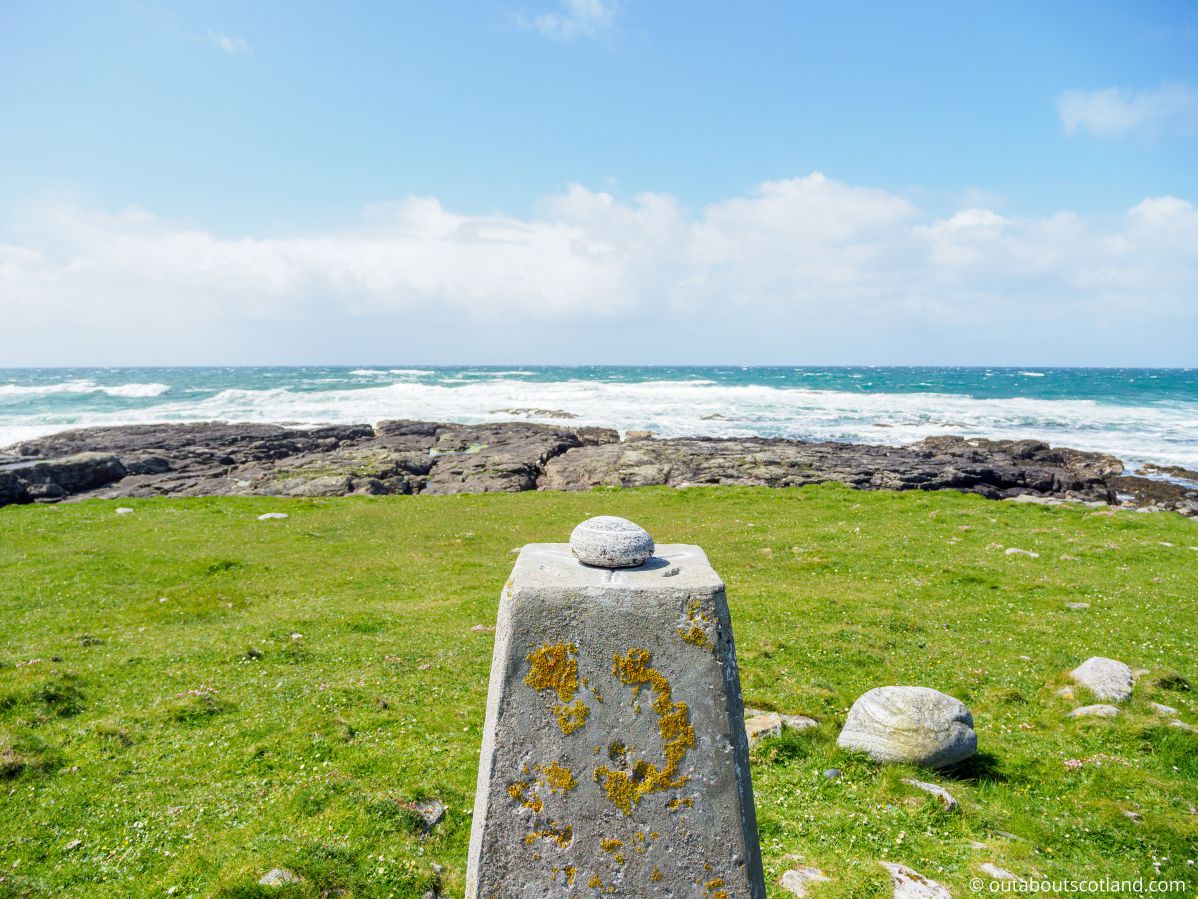
The amount of marine wildlife around the Uist islands is one of the highest in Scotland so joining a boat tour is an absolute must-do in my opinion. There are several operators to choose from but Uist Sea Tours are highly recommended.
With regard to accommodation, the main options on South Uist are wild camping and self-catering rentals. Be aware that rental accommodation is usually fully booked months in advance of the tourist season, so I suggest looking at least 6 months beforehand to secure a place. You might be lucky and find somewhere decent on Airbnb, but by far the best website for B&Bs and guesthouses is the official South Uist website.
If you have a campervan and are wondering where the best hardstanding location is, I thoroughly recommend Kilbride campsite on the southern edge of the island which has a cafe, Wi-Fi, and fabulous views overlooking the islands of Eriskay and Barra.
Finally, if you intend to wild camp you’re free to pitch a tent wherever you like but be mindful of South Uist’s fragile machair and take note that you will be expected to follow the Scottish Outdoor Access Code. The code is very common-sense and basically asks campers to be responsible by following guidelines, including:
- Take away all your litter.
- Remove all traces of your tent pitch and of any open fire.
- Do not cause any pollution.
If you’re considering wild camping or pitching in a designated campsite but don’t yet own a tent, check out these recommendations which will suit all budgets.
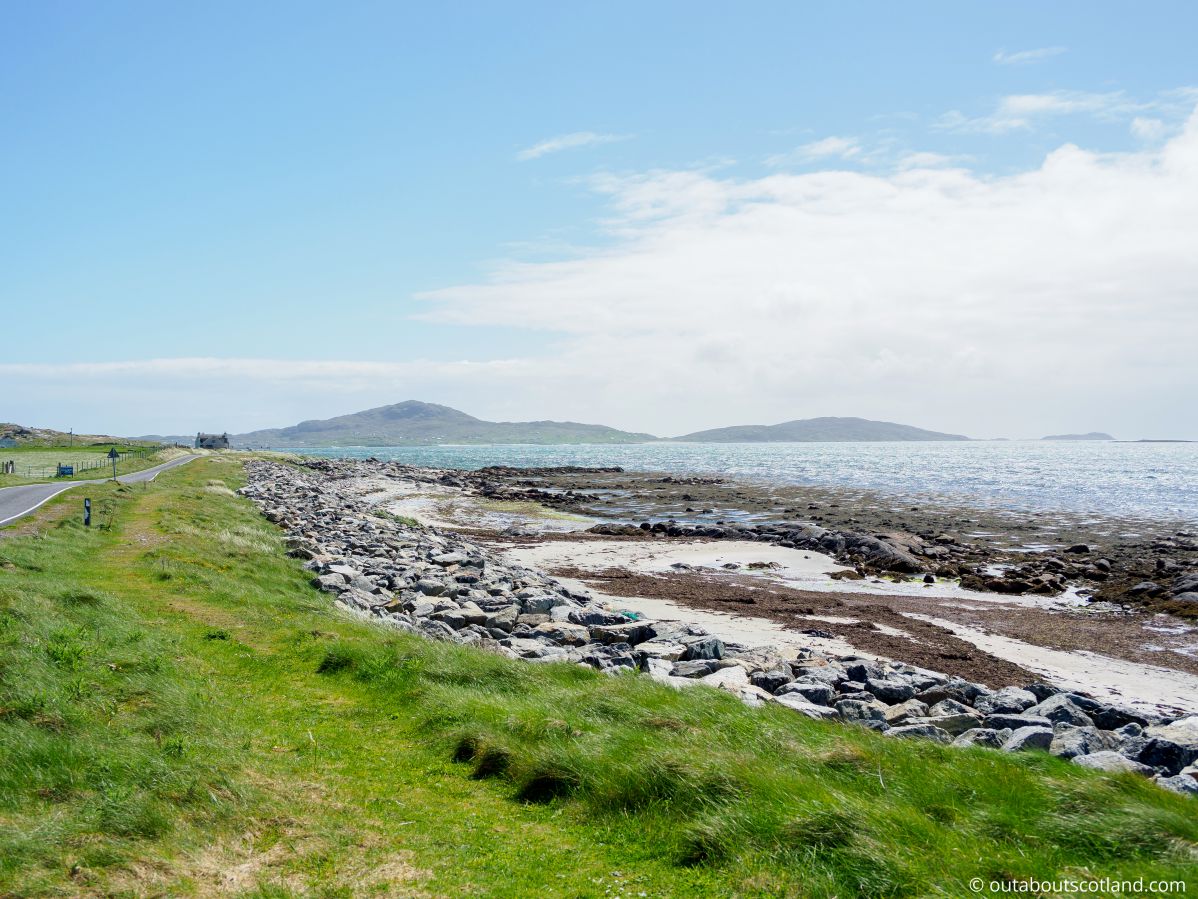
Things to Do
Visit the Kildonan Museum: Uncover South Uist’s rich history and culture at the Kildonan Museum. This local hub features artefacts, exhibits, and displays that tell the story of the island’s past. An on-site cafe offers delicious home-cooked food and a small shop sells unique gifts and souvenirs.
Explore the Loch Druidibeg Reserve: This nature reserve is a haven for bird watchers and nature enthusiasts. Home to a variety of wildlife including bird species ranging from hen harriers to cuckoos, it offers visitors the chance to lose themselves in South Uist’s stunning landscapes.
Walk the Hebridean Way: Stretching across the length of the Outer Hebrides, this long-distance walking route is one of the island chain’s most popular activities. The section of the route on South Uist is particularly attractive, passing through moorland, lochs, and heather-covered hills.
See the Our Lady of the Isles Statue: This impressive statue is a significant landmark on South Uist. It’s a serene spot for contemplation and offers panoramic views of the surrounding landscape and out across the pounding waves of the Atlantic.
Try Local Cuisine: South Uist is renowned for its fresh seafood. Visit one of the local restaurants or pubs to sample locally-caught shellfish, fish, and a range of traditional Scottish dishes.
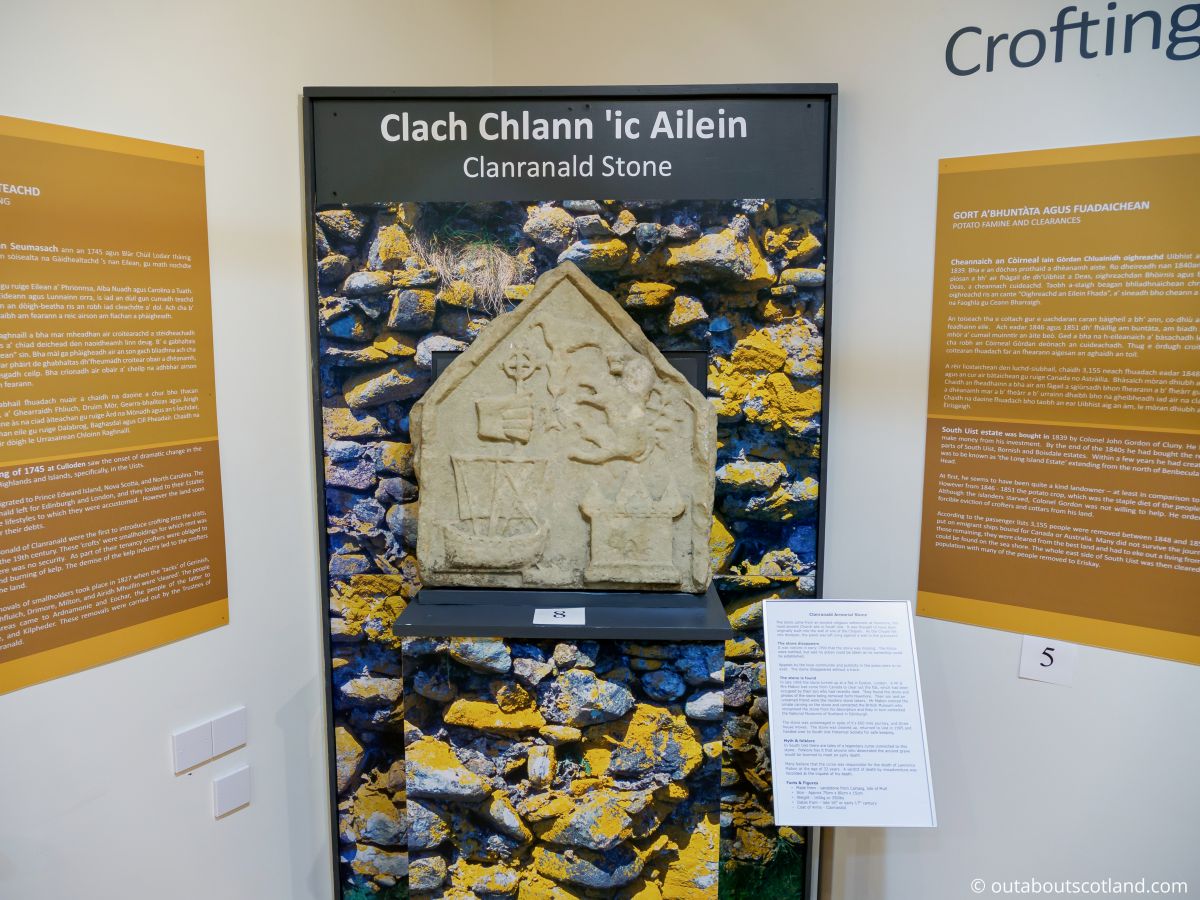
Things to Do Nearby
Isle of Benbecula. Address: Creagorry, Isle of Benbecula, HS7 5PG.
Benbecula is an island located immediately north of South Uist. A short causeway joins the two islands, allowing visitors to easily drive between them. Highlights of Benbecula are the attractive coastal road that follows the eastern shoreline and Reuval hill which offers a stunning panoramic view of the Southern Hebrides.
Kildonan Museum. Address: Kildonan, Isle of South Uist, HS8 5RZ.
This museum is dedicated to the culture and heritage of South Uist. The museum features a number of displays and artefacts that depict rural life on the island from crofting to fishing, along with stone carvings and a photo archive. There’s a cafe next to the museum that serves home-cooked local produce and a gift shop that sells tourist guidebooks and maps of South Uist.
Frobost Headland & Beach. Address: Isle of South Uist, HS8 5SA.
The Frobost headland lies immediately north of Kildonan Beach. Parking at St. Mary’s Catholic Church (postcode HS8 5SA) and walking west to the track’s end make for a pleasant stroll. Along the way, you’ll see the remnants of a Viking settlement before reaching the headland, which is home to a wide variety of seabirds. There’s a rough grass parking area at the headland that is suitable for mid-size motorhomes.
Flora MacDonald’s House. Address: A865, Mingarry, South Uist.
Flora MacDonald is famous for helping Bonnie Prince Charlie escape to France after his defeat at the Battle of Culloden. The Clan MacDonald-erected memorial cairn and the house’s foundation walls are both still standing.
Our Lady of the Isles. Address: West Gerinish, Isle of South Uist, HS8 5RW.
Our Lady of the Isles is a large statue situated near Gernish in the southern half of South Uist. The islanders commissioned and paid for the 40-ton statue to demonstrate their devotion to the Virgin Mary and the Catholic way of life. A path leads to the statue from the A865, which allows visitors to appreciate the stunning views across the Atlantic from a raised viewing platform.
Frequently Asked Questions
What is the main town on South Uist?
There is no town on South Uist. The main village is Lochboisdale which is located on the shore of Loch Baghasdail on the southeast edge of the island.
Lochboisdale was a major herring fishing port in the 19th century but today it’s mostly used as a ferry port with sailings to Oban on the mainland.
Why is South Uist Catholic?
The Scottish Reformation of the 1500s led to a major change in Scottish society when the papacy of Rome was rejected in favour of Scottish Protestantism.
Prior to this, the majority of Scotland was Catholic.
Although the new Presbyterian religion flourished throughout Scotland, due to their remoteness and lack of influence from the mainland, South Uist and the Isle of Barra remained predominantly Catholic.
What language do they speak in South Uist?
All of the permanent residents in South Uist speak English and approximately 80% speak both Gaelic and English.
Gaelic is one of the oldest languages in Europe and the Uist islands are one of the last strongholds where the majority of people still speak it.
Can you drive between North and South Uist?
It is possible to drive from the southernmost point of South Uist to the northernmost point of North Uist. From the Eriskay causeway, the B888 heads into South Uist, where it joins the A865. This road continues north over the causeway to Benbecula, across the North Ford causeway to Grimsay and North Uist, and onwards to the B893, which finishes at the Berneray causeway.

